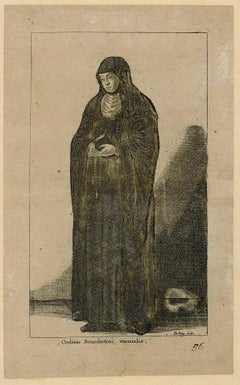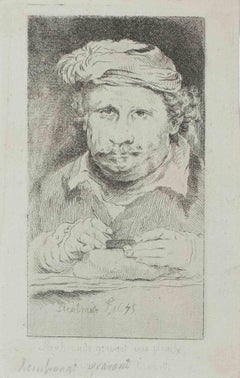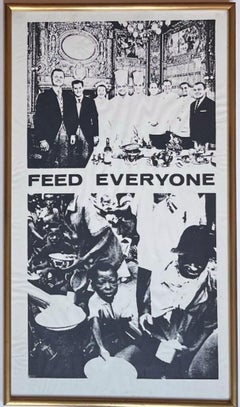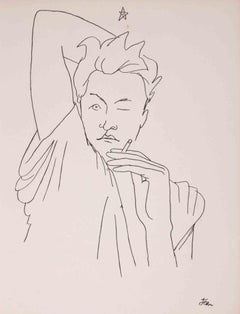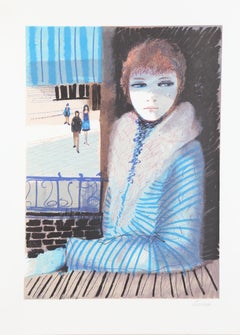Portrait Prints
Mid-19th Century Old Masters Portrait Prints
Etching, Laid Paper, Engraving
Early 20th Century Modern Portrait Prints
Etching
1960s Realist Portrait Prints
Lithograph, Offset
Early 2000s Street Art Portrait Prints
Offset, Lithograph
1920s Modern Portrait Prints
Lithograph
1970s Fauvist Portrait Prints
Lithograph
1980s Cubist Portrait Prints
Lithograph
2010s Portrait Prints
Archival Pigment
16th Century Old Masters Portrait Prints
Ink, Laid Paper, Woodcut
21st Century and Contemporary Contemporary Portrait Prints
Paint, Paper, Giclée
1910s American Realist Portrait Prints
Lithograph
1980s Cubist Portrait Prints
Lithograph
1970s Surrealist Portrait Prints
Lithograph
21st Century and Contemporary Contemporary Portrait Prints
Archival Ink, Digital
1970s Surrealist Portrait Prints
Paper, Lithograph
1920s Expressionist Portrait Prints
Lithograph, Offset
1950s American Modern Portrait Prints
Offset
1940s Modern Portrait Prints
Lithograph
1980s Contemporary Portrait Prints
Drypoint, Etching, Aquatint
1990s Performance Portrait Prints
Lithograph
1850s Post-Impressionist Portrait Prints
Etching
2010s Pop Art Portrait Prints
Lithograph, Offset
1980s Contemporary Portrait Prints
Lithograph
Late 20th Century American Modern Portrait Prints
Offset
1980s Pop Art Portrait Prints
Board, Screen
1930s Gothic Portrait Prints
Lithograph
2010s Street Art Portrait Prints
Screen
1990s Contemporary Portrait Prints
Screen, Watercolor
1940s Fauvist Portrait Prints
Lithograph
2010s Contemporary Portrait Prints
Acrylic Polymer, Lenticular
18th Century Portrait Prints
Laid Paper, Mezzotint
1970s American Modern Portrait Prints
Offset
1970s Surrealist Portrait Prints
Etching
1990s Contemporary Portrait Prints
Lithograph
20th Century Contemporary Portrait Prints
Archival Paper, Photographic Paper, C Print
Late 19th Century Edo Portrait Prints
Watercolor, Handmade Paper, Woodcut
1980s Abstract Portrait Prints
Lithograph
21st Century and Contemporary Contemporary Portrait Prints
Silk, Paper, Screen
Early 20th Century Victorian Portrait Prints
Lithograph
1970s Pop Art Portrait Prints
Polaroid
1970s Modern Portrait Prints
Lithograph
Late 19th Century Victorian Portrait Prints
Lithograph
1920s Modern Portrait Prints
Drypoint, Etching
1940s Portrait Prints
Paper, Gouache
Early 19th Century Victorian Portrait Prints
Engraving
20th Century Contemporary Portrait Prints
Giclée, Archival Pigment
1960s Pop Art Portrait Prints
Lithograph
2010s Pop Art Portrait Prints
Paper, Screen
1940s Portrait Prints
Etching
1980s Contemporary Portrait Prints
Screen
1910s American Modern Portrait Prints
Lithograph
1930s Ming Portrait Prints
Lithograph
1980s Realist Portrait Prints
Lithograph
2010s Street Art Portrait Prints
Mixed Media, Pigment, Archival Pigment
1940s Modern Portrait Prints
Lithograph
1850s Modern Portrait Prints
Paper, Woodcut
1980s Pop Art Portrait Prints
Paper, Screen
Early 2000s Contemporary Portrait Prints
Woodcut
1990s Impressionist Portrait Prints
Board, Screen, Clay
1940s American Realist Portrait Prints
Offset
